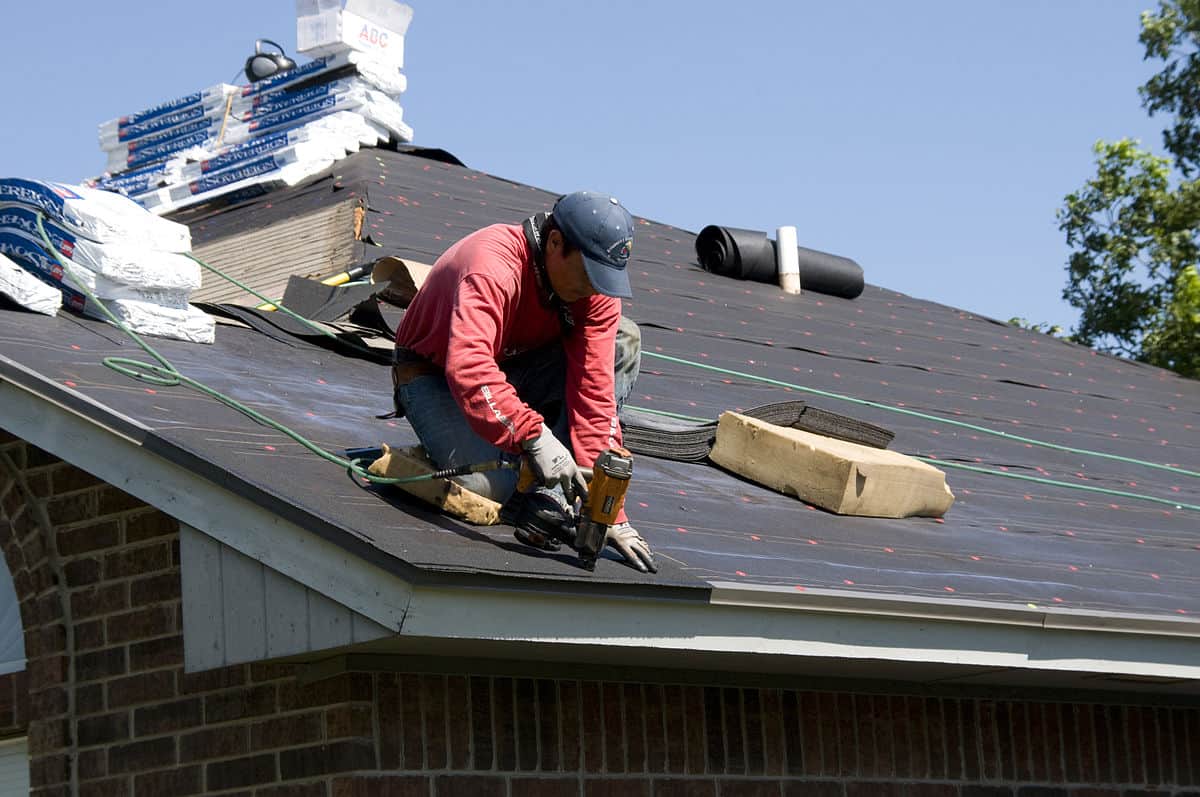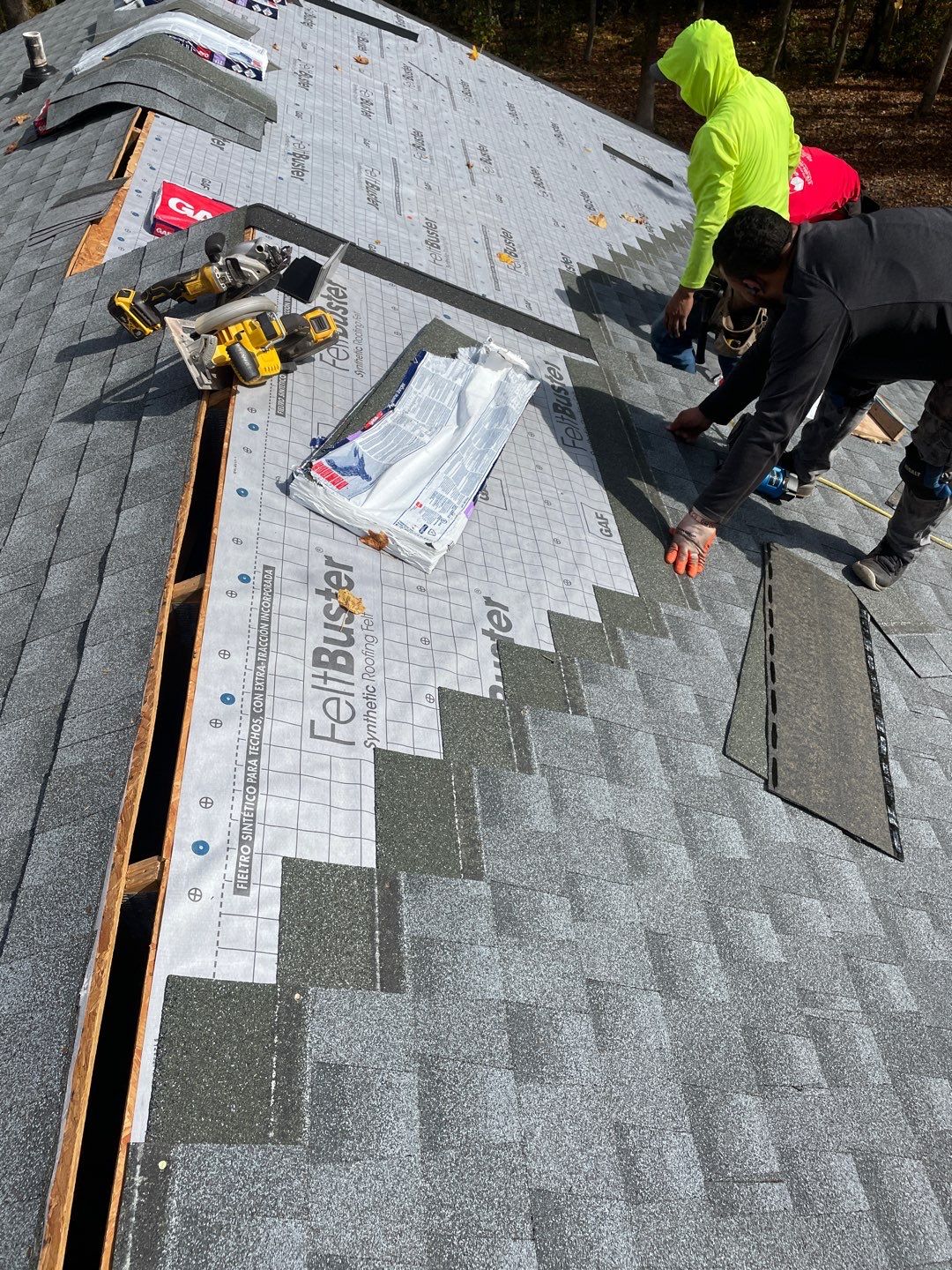Customer Testimonials on the Best Gainesville FL Roofing Companies Available
Customer Testimonials on the Best Gainesville FL Roofing Companies Available
Blog Article
Best Practices for Ensuring Appropriate Roof Ventilation
A balanced consumption and exhaust vent proportion, typically 1:300, plays a critical duty, with intake vents preferably put at the reduced edge of the roof covering for amazing air entrance and exhaust vents at the peak for cozy air exit. Keeping insulation away from vents is essential to stop air flow restriction.
Understand Ventilation Basics
Appropriately comprehending air flow basics is crucial for making certain the long life and performance of roof. Efficient air flow mitigates moisture accumulation and temperature extremes in the attic room, both of which can bring about considerable structural damages in time. A well-ventilated roof covering helps in protecting against typical problems such as mold development, wood rot, and ice dams, which can compromise the integrity of the roof covering products and the underlying frameworks.
The main objective of ventilation is to help with the motion of air, enabling a constant exchange in between the interior and outside atmospheres. This equilibrium is accomplished through a mix of consumption and exhaust vents that collaborate to maintain optimal air movement. Consumption vents, generally situated along the eaves or soffits, enable fresh air to go into the attic room area, while exhaust vents, typically positioned at or near the roofing ridge, make it possible for warm, humid air to escape.
Key factors affecting the effectiveness of roof covering ventilation include proper positioning, appropriate sizing, and making sure that both consumption and exhaust vents are unblocked. Regular examination and maintenance are vital to determine prospective obstructions, damage, or inadequacies in the ventilation system, consequently safeguarding the roofing system's efficiency and toughness.
Kinds Of Roof Covering Vents
Roof covering vents play an important role in preserving effective attic room ventilation and, by extension, the overall health of the roof covering system. Different kinds of roof vents are offered, each with distinct benefits customized to details roof needs.

Soffit vents are mounted under the eaves and work in tandem with roof vents to make certain a balanced consumption and exhaust system. By enabling cooler air to enter from below, soffit vents help with the expulsion of warm air via upper vents. Gable vents, situated on the exterior walls of the attic, offer an additional reliable remedy, especially in homes with saddleback roofs.
Examine Your Current Ventilation

Following, take into consideration the age and problem of your roof materials and air flow elements. Older systems may not follow current building regulations or might have degraded with time, minimizing their efficiency. Conduct a comprehensive evaluation to recognize any indications of wear and tear, such as corrosion, damages, or spaces that can compromise the system's performance.
Additionally, determine the attic temperature level and humidity levels. High temperature levels and moisture can show inadequate air flow.
Setup Best Practices
Effective setup of roof covering air flow systems is critical for guaranteeing optimum performance and longevity. Appropriate installment begins with recognizing the certain air flow demands of the roofing and the building it covers. This involves calculating the correct ratio of intake to wear down vents, commonly adhering to the 1:300 guideline, which specifies one square foot of ventilation for every 300 square feet of attic room floor area.

Intake vents should be mounted at the roof's lower side, often in the soffits, to enable great air to go into. Exhaust vents, on the find out here now other hand, should be mounted near or at the roof covering's height to help with the leave of cozy, wet air.
Seal all air vent connections meticulously to stop air leakages and potential water seepage. Usage high-grade materials and follow producer guidelines to make sure sturdiness and performance. Furthermore, integrating ridge vents with baffles can substantially enhance air flow performance by protecting against wind-driven rain and snow from entering the attic.
Inevitably, accurate installment of roof ventilation systems minimizes potential concerns such as mold and mildew development, ice dams, and architectural damages, making certain the roof's honesty and the building's general health.
Normal Maintenance Tips
Uniformity in maintenance methods is fundamental to making sure the long-term performance of roof covering ventilation systems. Normal assessments are crucial, ideally carried out biannually-- in the springtime and loss. During these assessments, ensure that vents are without debris, nests, and various other blockages that could hinder airflow. Look for any indicators of wetness buildup or mold, as these can suggest incorrect ventilation or leaks (roofing companies).
Cleansing the vents is another important job. Utilize a soft brush or a vacuum cleaner to get rid of dirt and debris from intake and exhaust vents. Be cautious not to harm the vent screens or louvers during the process. Additionally, examine the attic space for any indicators of water damage, which might jeopardize the honesty of the roof covering system.
Correct insulation is equally crucial. Make sure that attic room insulation does not block the vents, as this can significantly restrict air movement. Reposition or replace it to maintain a reliable obstacle. if any kind of insulation has moved or worked out.
Finally, replace any type of damaged or missing out on elements immediately. Broken vents, fractured roof shingles, or tatty blinking can all contribute to inadequate air flow and must be attended to without hold-up. Routine upkeep guarantees that the roof ventilation system operates efficiently, thereby expanding the life-span of the roofing system itself.
Conclusion
Ensuring appropriate roofing ventilation is vital for maintaining the effectiveness and longevity of a roof system. Adherence to the 1:300 consumption and exhaust vent ratio, combined with the critical positioning of vents, is vital.
A balanced intake and exhaust air vent proportion, frequently 1:300, plays a crucial role, with intake vents ideally put at the reduced edge of the roofing system for cool air access and exhaust vents at the top for cozy air exit. Consumption vents, commonly situated along the soffits or eaves, allow fresh air to get in the attic room, while exhaust vents, frequently situated at or near the roofing system ridge, allow hot, humid air to leave.
Soffit vents are installed under the eaves my company and job in tandem with roof covering vents to make certain a balanced intake and exhaust system. By permitting cooler air to enter from below, redirected here soffit vents promote the expulsion of hot air with top vents. Adherence to the 1:300 intake and exhaust air vent ratio, combined with the strategic placement of vents, is necessary.
Report this page